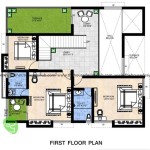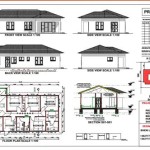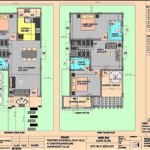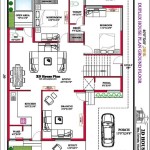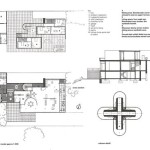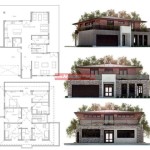Build a Guinea Pig Hutch Plans
Building a guinea pig hutch provides a rewarding opportunity to customize a comfortable and safe environment for these small pets. A well-designed hutch offers protection from the elements, predators, and provides ample space for exercise and enrichment. Careful planning is essential before beginning construction. This article will guide potential builders through the process of designing and building a guinea pig hutch.
The first step involves determining the appropriate size for the hutch. Guinea pigs require adequate space to roam, explore, and engage in natural behaviors. The recommended minimum space per guinea pig varies, but a good rule of thumb is 7.5 square feet for two guinea pigs. Larger groups will require proportionally more space. Additional space should be factored in for food bowls, water bottles, hiding places, and toys. Consider the number of guinea pigs planned for the hutch, both present and future, to avoid overcrowding.
Choosing the right materials is crucial for a durable and safe hutch. Untreated wood, such as kiln-dried pine or fir, is a popular choice for the frame. Avoid using pressure-treated wood, as the chemicals used in the treatment process can be harmful to guinea pigs. Wire mesh is ideal for the sides and top of the hutch, allowing for ventilation while keeping predators out. Choose a mesh size small enough to prevent escape and injury. Hardware cloth with 1/2" x 1" openings is a good option. Solid wood or plywood can be used for the flooring, providing a stable and comfortable surface. Avoid using wire mesh for flooring, as it can cause foot problems.
Developing a detailed plan ensures a smooth construction process. Sketch out the desired design, including dimensions and placement of doors, ramps, and any other features. This plan should incorporate easy access for cleaning and maintenance. The design should consider weather protection if the hutch is to be placed outdoors. A sloped roof is recommended for rain runoff. Overhangs can provide additional protection from the elements.
Construction begins with building the frame. Cut the wood according to the plan and assemble the frame using screws and wood glue for added strength and stability. Ensure all corners are square and joints are secure. Attach the wire mesh to the sides and top of the frame, using staples or small nails. Securely attach the flooring to the frame. If using multiple levels, construct ramps for easy access between levels. Ensure the ramps are not too steep and provide adequate traction for the guinea pigs.
Doors are essential for accessing the hutch for cleaning, feeding, and interacting with the guinea pigs. Plan for at least one large door that provides easy access to the entire interior. Position doors strategically to minimize disturbance to the guinea pigs. Use sturdy hinges and latches to ensure the doors remain securely closed. Consider adding a latch or lock to prevent predators from opening the hutch.
Protecting the hutch from the elements is vital for outdoor enclosures. Apply a non-toxic waterproof sealant to the wooden frame to protect it from moisture and rot. Consider adding a cover or tarp for additional protection during inclement weather. Elevate the hutch off the ground to prevent moisture buildup and improve ventilation. Place the hutch in a sheltered location, away from direct sunlight, strong winds, and excessive rain.
Adding finishing touches can enhance the functionality and aesthetics of the hutch. Consider adding hiding places, such as small wooden boxes or tunnels, to provide a sense of security for the guinea pigs. Ramps, shelves, and other climbing structures can provide enrichment and encourage exercise. Food bowls and water bottles should be securely attached to the hutch to prevent spills and contamination. Regular cleaning and maintenance are essential for a healthy environment. Remove soiled bedding regularly and disinfect the hutch periodically.
Providing suitable bedding is crucial for the comfort and hygiene of the guinea pigs. Suitable bedding materials include paper-based bedding, fleece liners, or aspen shavings. Avoid using cedar or pine shavings, as these can be harmful to their respiratory systems. The bedding should be changed regularly to maintain a clean and dry environment. The frequency of bedding changes will depend on the number of guinea pigs and the size of the hutch. A good ventilation system will help to keep the hutch fresh and reduce odors.
Regularly inspect the hutch for any signs of damage or wear. Repair or replace any damaged components promptly. Ensure the wire mesh remains intact and secure to prevent escapes. Check the stability of the frame and ensure all connections are tight. Regular maintenance will prolong the life of the hutch and ensure a safe and comfortable environment for the guinea pigs.

How To Build A Guinea Pig Hutch Buildeazy

How To Build A Guinea Pig Hutch Buildeazy

Two Tier Rabbit Guinea Pig Hutch Plans Assembly Instructions Comes With Cut List And Step By Guide Hong Kong

How To Build A Guinea Pig Hutch Buildeazy

Two Tier Rabbit Guinea Pig Hutch Plans Assembly Instructions Comes With Cut List And Step By Guide

147 Deluxe 2 Y Rabbit Hutch Cage With Under Run Buy Small Animal Supplies Casas Para Cobayas Mascotas Gallinas

Cage Designs Plans Guinea Pig Cages
:strip_icc()/free-rabbit-hutch-plan-buildeazy-5bbcce7946e0fb002660495c.png?strip=all)
8 Free Diy Rabbit Hutch Plans

How To Build A Guinea Pig Hutch Buildeazy

Build Your Own Rabbit Or Guinea Pig Hutch Plans Ebook By Wilhelm Fein Xinxii

